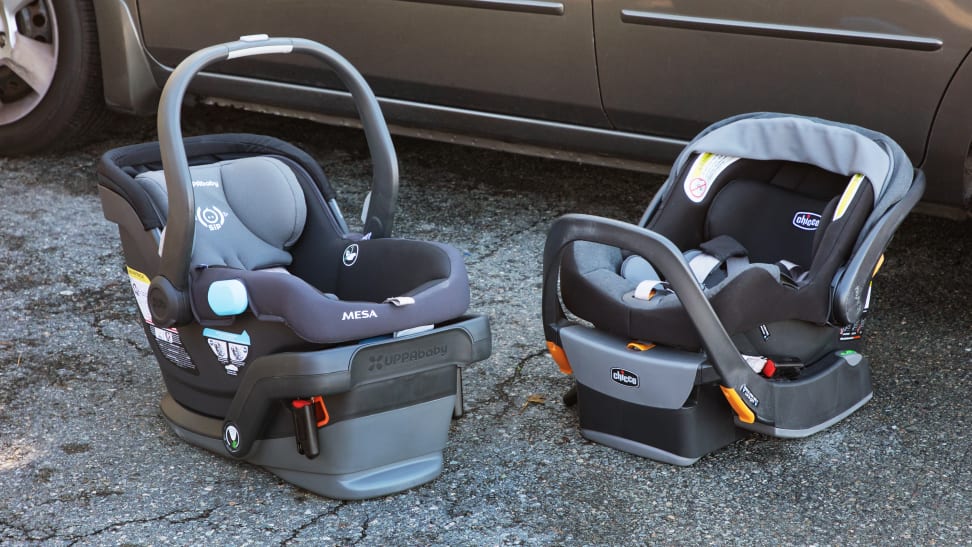As a parent, ensuring your baby’s safety while traveling is a top priority, and selecting the right baby car seat is one of the most important decisions you’ll make. With so many options available, it can be overwhelming to choose the best one for your baby’s needs. In this article, we’ll break down the different types of baby car seats, their features, and provide helpful tips for selecting the perfect seat to keep your little one safe and comfortable.
Types of Baby Car Seats
Baby car seats come in various types, each designed for different stages of your child’s development.
Understanding the differences between them is essential to ensure you’re choosing the right one at each stage.
-
Infant Car Seats
Infant car seats are designed specifically for newborns and babies. These seats are rear-facing and come with a harness system that secures the baby safely. -
They typically have extra padding for newborns and provide excellent support for your baby’s head and neck.
-
Infant car seats are portable, which makes it easy to carry your baby in and out of the car without disturbing them.
-
When to Use: From birth to around 12-24 months (depending on your baby’s size).
-
Safety Feature: Always rear-facing, as this provides the safest position in case of a crash.
-
-
Convertible Car Seats
Convertible car seats can be used in both rear-facing and forward-facing positions. These seats are designed to grow with your child, making them a more long-term solution. -
They are typically larger than infant car seats but offer excellent longevity, as they can be used for both infants and toddlers.
-
When to Use: From about 6 months to 4 years or longer.
-
Safety Feature: Convertible seats have adjustable harnesses and can be used rear-facing initially, which is the safest position for younger babies.
-
-
Booster Seats
Booster seats are for older toddlers and young children who have outgrown their convertible seats but are still too small to safely use a seat belt alone. These seats lift your child up so that the vehicle’s seat belt fits correctly over their shoulder and lap.-
When to Use: From 4 to 8 years old (depending on your child’s size).
-
Safety Feature: Booster seats use the vehicle’s seat belt for safety once your child is large enough.
-
Key Features to Look for in a Baby Car Seat
When selecting a baby car seat, there are a few important features you should consider to ensure safety and comfort:
-
Five-Point Harness
A five-point harness system is crucial for securing your baby. It straps your child in at five points: two at the shoulders, two at the hips, and one between the legs. This is the most secure way to keep your child safe in the event of a crash. -
Side-Impact Protection
Side-impact protection is important for shielding your baby in the event of a side collision. Many car seats offer energy-absorbing foam or additional padding around the sides of the seat to enhance protection. -
Ease of Installation
The car seat should be easy to install and ensure a secure fit in your vehicle. Many car seats now come with an easy-to-use installation system, such as LATCH (Lower Anchors and Tethers for Children) or a seat belt installation guide, to make the process smoother for parents. -
Reclining Feature
A reclining car seat is essential for newborns, as it ensures they are in a comfortable and safe position, particularly when they are very young and have limited neck strength. -
Adjustable Harness and Headrest
As your baby grows, the harness and headrest should be easily adjustable to ensure that they continue to fit securely. Look for a car seat with multiple harness settings to accommodate your growing child.
Tips for Choosing the Right Baby Car Seat
-
Consider Your Car’s Size and Layout
Not all car seats fit every vehicle, so it’s important to check if the seat you’re considering will fit in your car. Be sure to check the dimensions of the seat and your car’s back seat to ensure compatibility. -
Choose the Right Stage for Your Child
Always choose a car seat that fits your child’s current size and weight. Newborns need an infant seat, while toddlers will need a convertible seat. Once your child has outgrown their convertible seat, it’s time to switch to a booster seat. -
Check for Safety Ratings
All car seats sold in the U.S. must meet federal safety standards. Be sure to check the car seat’s safety rating and reviews to ensure it performs well in crash tests. -
Think About Convenience
Consider how easy it will be to install, clean, and adjust the car seat. Some seats are machine washable, which can be a huge benefit for parents dealing with spills and accidents. -
Read Reviews
Look at reviews from other parents to get an idea of how the car seat performs in real-world situations. This can help you make an informed decision about which seat is the best fit for your needs. - Read more about Troubles Naturally…
Conclusion
Choosing the right baby car seat is crucial for your child’s safety and comfort.
Whether you’re looking for an infant car seat, a convertible seat, or a booster, it’s important to consider your child’s age, size, and developmental stage.
Look for key features like a five-point harness, side-impact protection, and ease of installation, and always check safety ratings before making a purchase.
With the right car seat, you can ensure that your baby stays safe and secure on every journey.




